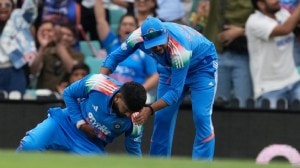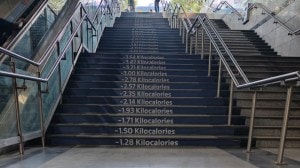Gold loan segment to hit Rs 10 lakh crore this fiscal
While banks remain dominant driven by their gold jewellery-backed agriculture loans, at the same time, NBFCs hold the pole position in retail gold loans and are expected to expand at 17-19 per cent in FY2025, rating firm ICRA said.
 The NBFC gold loan book is quite concentrated, with the top four players accounting for 83 per cent share in March 2024, This, however, declined from 90 per cent two years ago as some of the existing players have diversified to this segment and some newer players have emerged, it said.
The NBFC gold loan book is quite concentrated, with the top four players accounting for 83 per cent share in March 2024, This, however, declined from 90 per cent two years ago as some of the existing players have diversified to this segment and some newer players have emerged, it said.
Organised gold loans (GL) by banks and non-banking financial companies (NBFCs) are set to exceed Rs 10,00,000 crore in the current financial year (FY2025) and hit the Rs 15,00,000 crore mark by March 2027, according to a report.
While banks remain dominant driven by their gold jewellery-backed agriculture loans, at the same time, NBFCs hold the pole position in retail gold loans and are expected to expand at 17-19 per cent in FY2025, rating firm ICRA said.
It said overall, organised gold loan business expanded at a compounded annual growth rate (CAGR) of 25 per cent over the period FY2020-FY2024, driven by banks, which expanded these loans at a higher CAGR of 26 per cent, while the NBFCs expanded theirs at 18 per cent during the same period.
Banks’ gold loan growth was driven by agriculture loans backed by gold jewellery, which grew at a CAGR of 26 per cent during FY2020-FY2024, while their retail gold loans grew by 32 per cent on a lower base. “Consequently, the share of the NBFCs reduced during this period, which were largely focussed on retail GLs for consumption or business purposes,” ICRA said.
Public sector banks (PSBs) accounted for about 63 per cent of the overall gold loans in March 2024, up from 54 per cent in March 2019, while the NBFC and private banks’ shares moderated by equal measure during this period. NBFCs, however, continue to hold a stable share in the retail gold loans over the last 3-4 years.
ICRA expects NBFC gold loans to expand at 17-19 per cent in FY2025 and projects it to grow at a CAGR of 14-15 per cent during FY2026-FY2027. The moderation in competitive intensity is leading to some expansion in the loan yields of the NBFCs. However, their yields are expected to be lower by 200-300 bps than the peak levels seen 4-5 years back, it said in a report.
Over the recent past, NBFC gold loan growth trends were influenced by the trends demonstrated by other loan products, namely microfinance, unsecured business or personal loans, which are also targeted at similar borrowers. “With intensifying headwinds for unsecured loans, resulting in lower growth vis-a-vis the previous fiscal, and supported by buoyant gold prices, the NBFC GL book growth revived in FY2024 and the trend is expected to continue into FY2025,” said A M Karthik, Co-Group Head, Financial Sector Ratings, ICRA.
ICRA said growth in the gold loan book of NBFCs is largely driven by the gold prices as the branch additions and the tonnage of gold jewellery held as collateral grew at the modest pace of 3-4 per cent vis-à-vis the 18 per cent growth in the loan book during FY2020-FY2024 for the larger players.
The NBFC gold loan book is quite concentrated, with the top four players accounting for 83 per cent share in March 2024, This, however, declined from 90 per cent two years ago as some of the existing players have diversified to this segment and some newer players have emerged, it said.
Yield pressures faced by the NBFCs in FY2022 and FY2023, have abated to some extent in FY2024. However, they continue to remain 200-300 basis points lower than the peaks witnessed in FY2020/FY2021. Credit costs have remained low, staying well below 0.5 per cent in the last five years.
“Access to collateral and the liquid nature of the same reduce the lender’s credit risk. In case of loan overdues, lenders undertake timely auctions, which have helped in healthy realisations,” it said.
It said entities are steadily augmenting their online lending and a sustained scale-up should help improve their operating leverage and augment their customer base. The directions restricting cash disbursements (on loans more than Rs 20,000) have not impacted business significantly as entities have been able to adapt to the new requirement, it said.



- 01
- 02
- 03
- 04
- 05




























